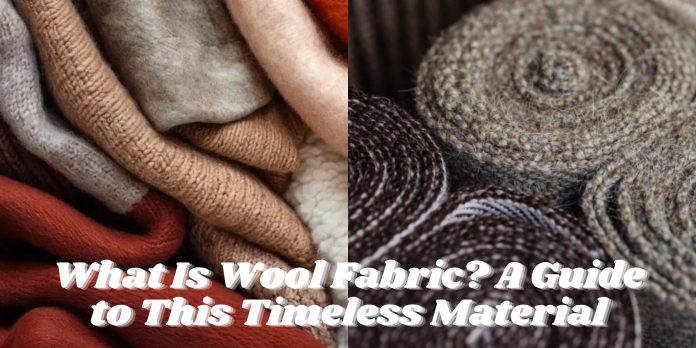What Is Wool Fabric?
Wool has long been recognized for its warmth, durability, and comfort – qualities that make it a popular choice across clothing, upholstery, and home textile applications. But just what exactly makes wool fabric special and why has it remained such a beloved material throughout history? In this guide, we explore its origins, properties types, and uses.
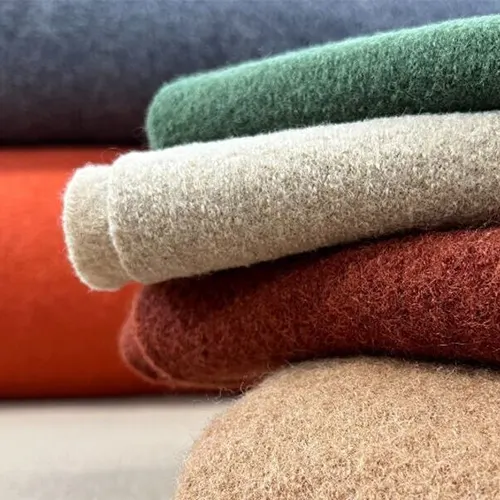
1. What Is Wool Fabric?
Wool fabric is an eco-friendly textile created using fibers sourced from sheep fleece as well as other animals’ wool (cashmere and mohair from goats); alpacas; llamas and rabbits for anora). Once these fibers have been spun into yarn they are then either knitted or woven to form a fabric with unique properties that make it resilient, breathable, and thermal insulating – ideal for colder climates as well as many applications.
Wool is biodegradable, making it the eco-friendly choice for consumers who value environmental conservation.
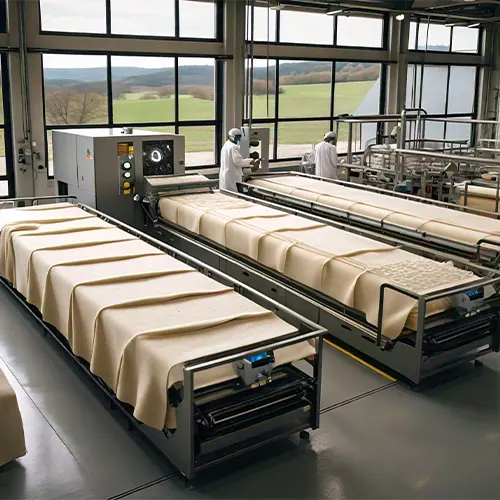
2. How Is Wool Fabric Made?
Wool fabric production requires several steps. Here’s an outline of their production:
- Step 1: Shearing
Wool production begins with shearing, the process by which sheep have their wool cut from them without harm to themselves or other sheep in this gentle procedure that usually happens once annually in springtime.
- Step 2: Cleaning and Scouring
After shearing, raw wool is given an initial washing to eliminate dirt, grease, and any impurities – this cleaning process, known as “scouring”, ensures its readiness for further processing.
- Step 3: Carding
Clean wool must then be carded, which disentangles its fibers and aligns them parallel for smooth continuous yarn strands.
- Step 4: Spinning
Wool fibers can be spun into yarn of various thicknesses and textures to meet different consumer preferences. Spinning involves twisting together fibers to form a strong yet flexible thread.
- Step 5: Weaving or Knitting
Once the yarn has been prepared, it is either woven or knitted to produce wool fabric. Weaving produces smooth structures while knitting produces more flexible and stretchable materials.
- Step 6: Finishing
Wool fabric production’s final step involves finishing processes such as dyeing, fulling (making fabric denser), and raising nap (to give a softer feel). These steps add the final touches for the enhanced feel and appearance of finished wool fabrics.
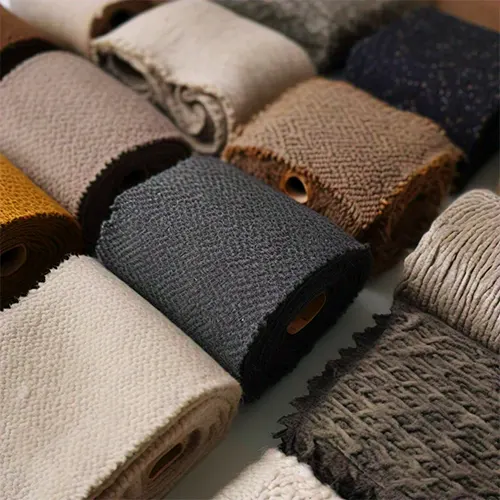
3. Types of Wool Fabric
Wool is not an all-encompassing material. There are various varieties, each possessing specific properties depending on which animal it originated from and its subsequent processing methods. Here are some popular types of wool fabric:
- Merino Wool
Merino wool, produced from Merino sheep, is one of the softest and most luxurious types of wool available today, ideal for next-to-skin apparel like base layers and sweaters.
- Cashmere Wool
Cashmere is widely renowned for its luxurious softness and warmth, produced from the luxurious undercoat of cashmere goats and often utilized to craft high-end apparel such as scarves and sweaters.
- Mohair Wool
Mohair fabric comes from the Angora goat and is well known for its silky texture and sheen, along with being durable, elastic, wrinkle-resistant, and stain-proof, making it the go-to material for suits and outerwear alike.
- Alpaca Wool
Alpaca wool is lightweight, hypoallergenic, and more luxurious than regular sheep wool; often found in luxury knitwear or blankets.
- Angora Wool
Derived from Angora rabbits, angora wool is known for being extremely soft and fluffy – often blended with other fibers to add warmth and texture to garments.
- Shetland Wool
Named for the Shetland Islands, Shetland wool hails from a specific breed of sheep that’s widely regarded for its coarse texture and longevity, commonly seen used to craft traditional Scottish garments like kilts and sweaters.
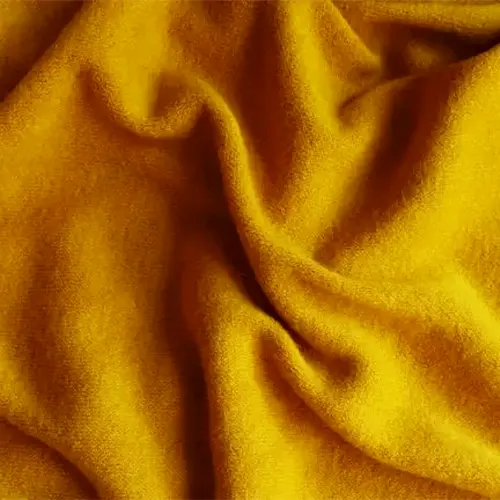
4. Properties of Wool Fabric
What distinguishes wool fabric from other textiles is its remarkable combination of properties that makes it one of the most adaptable natural fibers. Here are some key attributes associated with it:
- Thermal Insulation
Wool is known for retaining heat efficiently, making it the ideal fabric choice for cold-weather clothing. Wool fibers create air pockets that trap heat for insulation purposes.
- Moisture-Wicking
Wool’s moisture-wicking properties make it an excellent material to choose for activewear as it helps regulate body temperatures during physical activities and keep wearers feeling dry and comfortable. This moisture absorption makes wool an excellent way to stay cool during exercise sessions and keeps body temperatures at an optimum level while exercising:
- Breathability
Wool is highly breathable, permitting airflow through and preventing overheating.
- Elasticity
Wool has the natural ability to stretch back into shape after being stretched, making wool garments resistant to wrinkles and sag.
- Durability
Wool is a durable material that stands up well over time; with proper care, it could even outlive you! When properly maintained wool garments will outlast even cotton clothing by decades.
- Odor Resistance
Wool is known for naturally wicking away moisture and keeping bacteria at bay, thus eliminating unpleasant odors from building up over time.
- Flame Retardant
Wool has natural flame-retardant qualities, meaning it does not readily ignite or melt when exposed to heat sources.
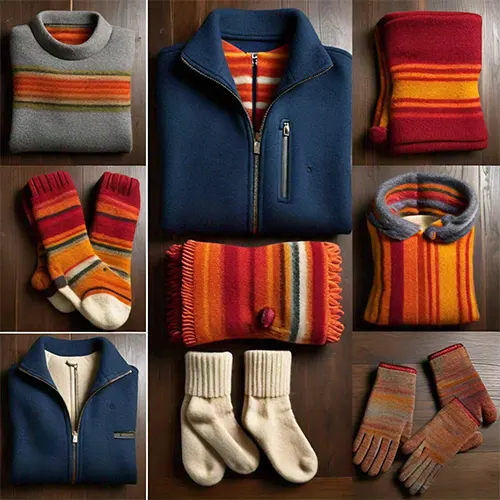
5. Uses of Wool Fabric
Wool fabric’s versatility enables it to be utilized in numerous settings – from clothing and home furnishings, such as furnishings to apparel and more. Some common applications of this fabric are as follows:
- Clothing
Wool fabrics such as Merino wool have become increasingly popular for use in sweaters, suits, coats, and scarves due to their soft feel and moisture-wicking abilities. Furthermore, these unique properties also make Merino ideal for base layers or activewear use.
- Bedding
Wool has long been used as an insulating material in blankets, duvets, and mattress pads due to its thermal-regulating qualities, providing for an even sleeping temperature throughout the night. Wool bedding helps regulate body temperatures for maximum comfort during restful sleep.
- Upholstery
Wool is an attractive material suitable for upholstery in furniture and car interiors due to its strength, resistance to pilling and wrinkles, and low care requirements.
- Carpets and Rugs
Wool fibers are often utilized in carpet and rug production due to their durability, natural stain resistance, and ability to withstand heavy foot traffic.
- Crafts and Textiles
Wool is also widely utilized as crafting material in felt production, which involves matting together wool fibers into one mass for decorative textiles and handmade crafts.
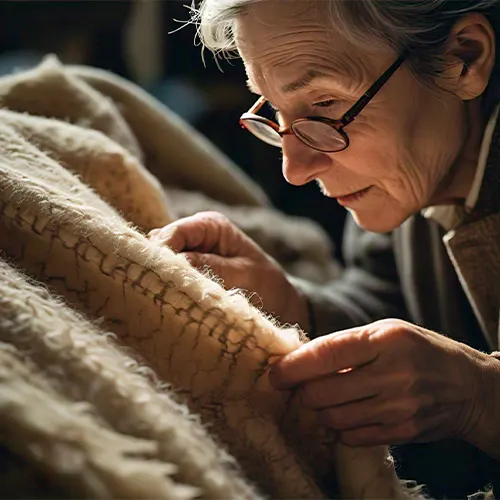
6. How to Care for Wool Fabric
Wool fabric requires special care to retain its aesthetic value and extend its longevity. Here are a few pointers on how best to take care of wool:
- Hand Wash or Dry Clean
Wool garments should usually be hand washed or dry cleaned in cold water to reduce shrinkage, while some fabrics such as merino may require machine washing on a gentle cycle for optimal care. Always consult the care label first.
- Avoid High Heat
Wool can be sensitive to high temperatures; to protect it, avoid washing in hot water or tumble-drying it; air drying is often best when it comes to wool garments.
- Use Wool-Safe Detergent
Use a detergent specifically designed for wool to protect the fibers. Regular detergents can be too harsh and may damage the fabric.
- Store Properly
Store wool garments in a cool, dry area to avoid stretching of fabric, while using mothballs or cedar to protect it against insects such as mothballs.
Conclusion
Wool fabric has become one of the world’s most beloved and versatile textiles, thanks to its impressive properties such as insulation and moisture-wicking as well as durability and natural elasticity. When looking for warmth in winter or durability for home furnishings, wool provides style comfort, and longevity that’s both fashionable and sustainable – understanding its different varieties will allow you to get maximum use out of this natural and eco-friendly fabric for years.


